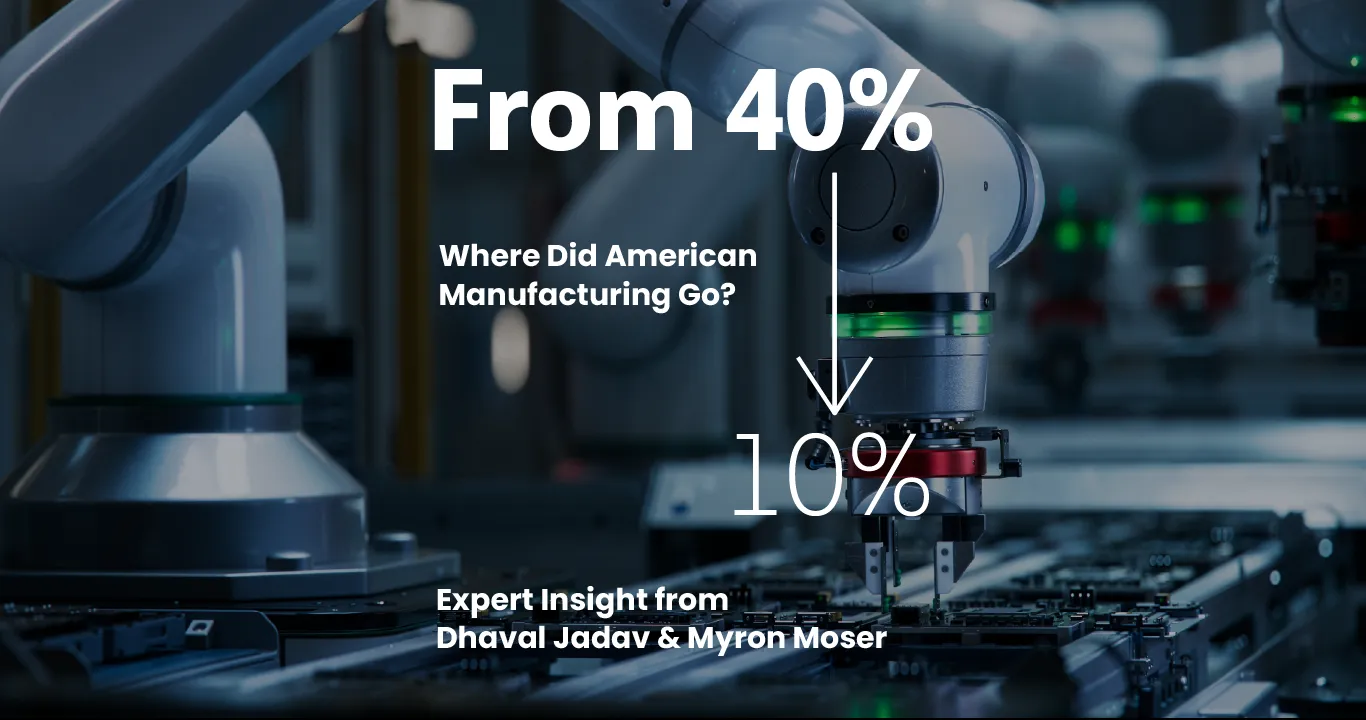FEBRUARY 01, 2023 | PUBLISHED IN
by Myron Moser, Chairman Emeritus Hartfiel Automation alliantgroup Strategic Advisory Board Member
If you have any questions about this article, please send us a message.
With the start of another tax season, businesses in the automation and manufacturing industries are forced to evaluate how persisting economic and industry trends have impacted their profit margins and viability.
For instance, supply chains continue to falter, with some reports suggesting these issues could continue well into 2023. In fact, 73% of manufacturing companies say their current supply chains are still not fully protected, opening up their essential operations for disruption.
Additionally, the talent pool remains stagnant, with companies throughout the sector still having difficulties recruiting and retaining their workforce. Estimates found that by 2030, there could be up to 2.1 million unfilled manufacturing jobs, and the cost of those jobs could total $1 trillion in 2030 alone. Despite being perceived by some as a less glamorous career choice, manufacturers are a strong contributor to American innovation, and their success will ultimately dictate our country’s production status on the global stage.
Luckily, businesses have a handful of resources at their disposal this tax season to fortify their supply chains and reinvest in their talent pool. Automation companies that understand and take advantage of these key tax credits will be the ones that survive, remain competitive in the industry and play a crucial part in shoring up our domestic infrastructure.
The R&D tax credit
A key resource for companies across every industry, not just scientists in lab coats, the Research & Development Tax Credit was originally established to increase technical jobs and incentivize innovation. Since then, it’s undergone multiple iterations in Congress, and it presently allows businesses to deduct wage, supply, contractor and computer costs associated with the implementation or improvement of new products and processes. For companies working in manufacturing, the R&D credit has been a huge driver of prosperity and technological implementation–from automating supply chains to supplementing worker shortages with advanced robotics and machinery.
However, Congress recently made some drastic policy chances surrounding the R&D credit, and it’s important for businesses to understand how this may impact their tax liability. Instead of allowing companies to deduct 100 percent of expenses incurred in the same year, they must now spread these deductions over five years. This will unfortunately decrease cashflow and limit resources for innovation, hitting the manufacturing sector the hardest during an already tumultuous economic period.
Even with these limitations, manufacturers should not throw in the towel. Many businesses are already sounding the alarm on how these changing requirements could impact their workflows and projections, but until Congress remedies the issue and allows for full expensing again, automation leaders should take extra care when allocating their R&D efforts to tackle their most pressing problems. Working closely with a CPA partner will be crucial this tax season to ensure manufacturers are claiming their fair share and getting the resources they need.
Thorough documentation of all R&D activity is needed to deduct costs, so businesses should focus on the following:
- Identifying all business actions and projects that may qualify: Anything that falls under developing new products or processes, enhancing existing products or process, or improving upon existing prototypes and/or software will likely entitle you to the R&D credit
- Identifying the key personnel who worked on the qualifying project: Employee testimonies may be required to confirm R&D activity
- Cataloguing and double checking all expenses related to R&D activity: Ideally, manufacturers should be closely tracking theses costs throughout the year to simplify the deduction process come April
The employee retention tax credit
Another key resource that manufacturers can claim retroactively is the Employee Retention Tax Credit. The ERC was originally instated during the height of the COVID-19 pandemic to reward businesses for retaining staff, though many companies prematurely and wrongfully disqualified themselves from these benefits.
The good news is automation companies can still leverage prior tax years to receive their fair share. For example, manufacturers that continue to experience supply chain issues will still be eligible for this payroll-based incentive, allowing them to put funding behind everything from new recruitment channels to alleviate ongoing staffing issues, to upgrading their supply chain technology and management software. Other qualifying impacts include, but are not limited to:
- Full or partial shutdowns related to COVID-19
- Interrupted operations
- Inability to access equipment or work with vendors
- Shifting hours to increase sanitation of your facility
Further, select automation businesses that may be considering layoffs amid recession fears could prevent workforce downsizing by leveraging the funds from the ERC–a win-win for companies and their employees.
Act now
Tax season doesn’t have to be a sobering reality for the automation industry. Businesses that invest time in understanding the benefits they are entitled to have the opportunity to not only stay afloat in this difficult economic climate, but to thrive and reinvest in workforce resiliency and technical implementation. Don’t wait another year and let these key resources fall by the wayside.
About the Author

Myron Moser is Chairman Emeritus of Hartfiel Automation in Minnesota. He joined Hartfiel Automation in 1990 and quickly rose in the ranks to the executive level in 1995. Myron is recognized as one of the top executives in the U.S. automation industry. Under his leadership, Hartfiel Automation experienced incredible growth, continued to diversify its product offerings in hydraulics, aluminum extrusions, and robotics and automation solutions. For more than 60 years, his company helped strengthen the American manufacturing industry through innovative solutions. Myron leverages his decades of experience as a top executive in the world of automation for strategic benefit of alliantgroup’s clients and CPA partners.



